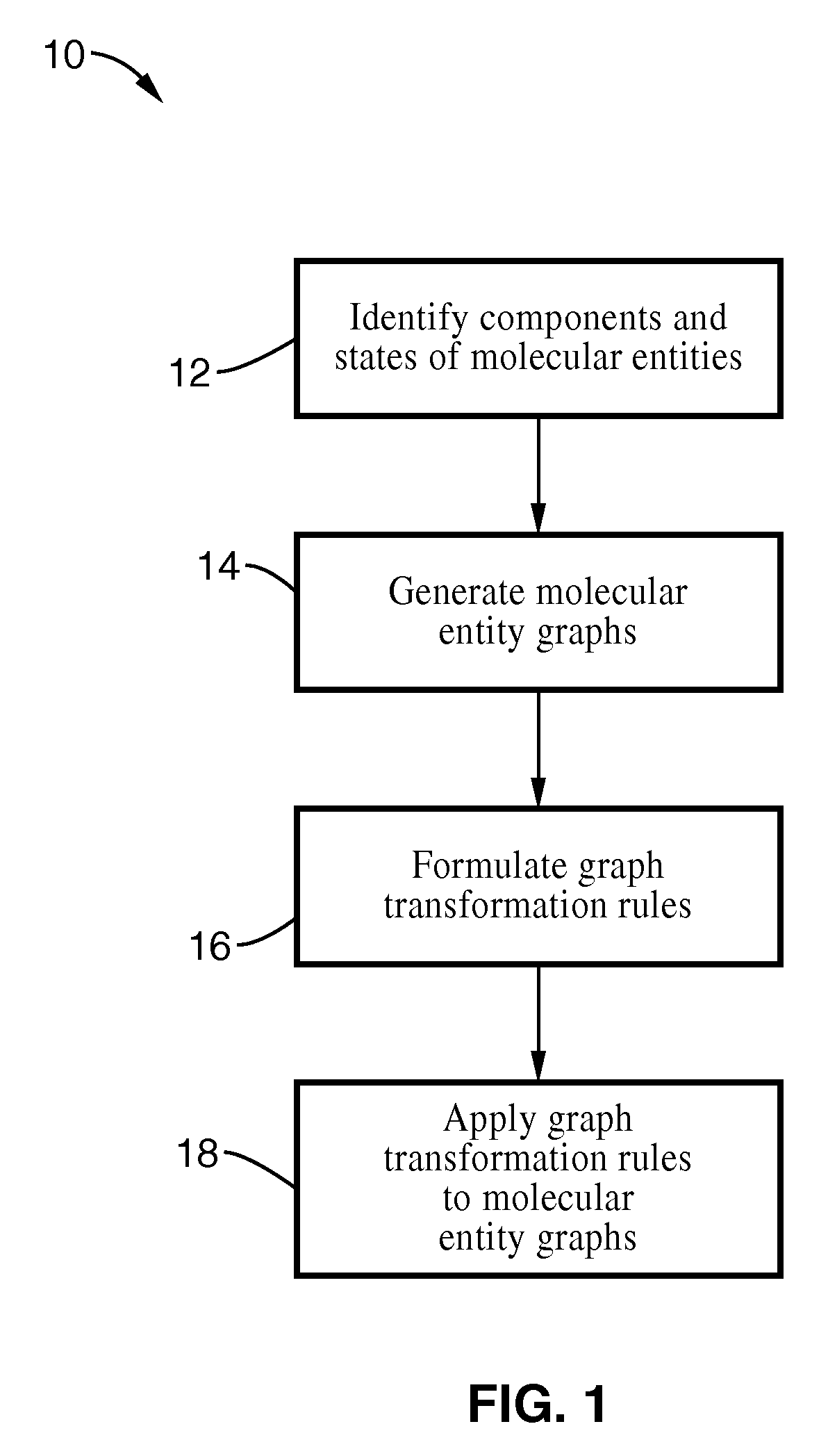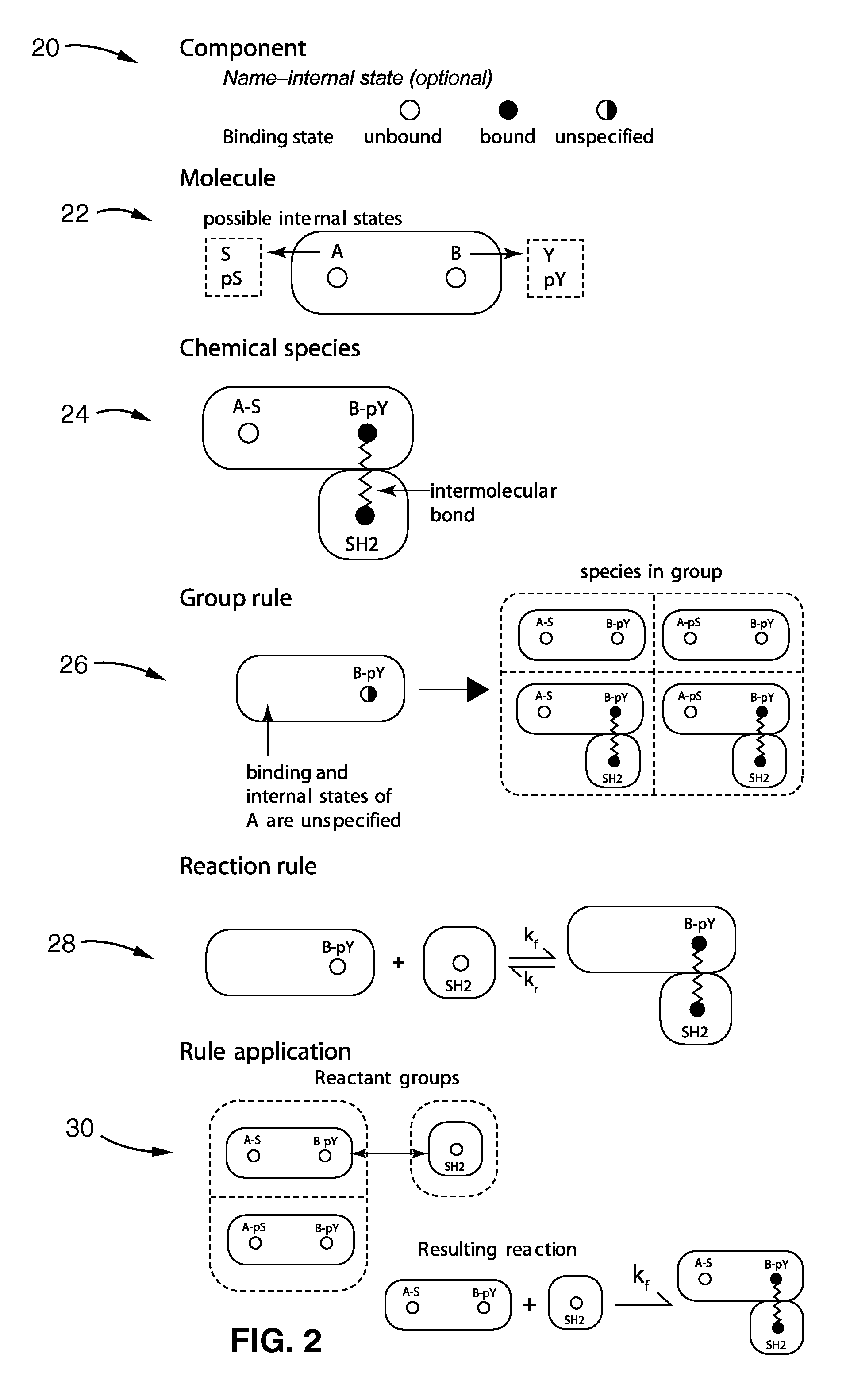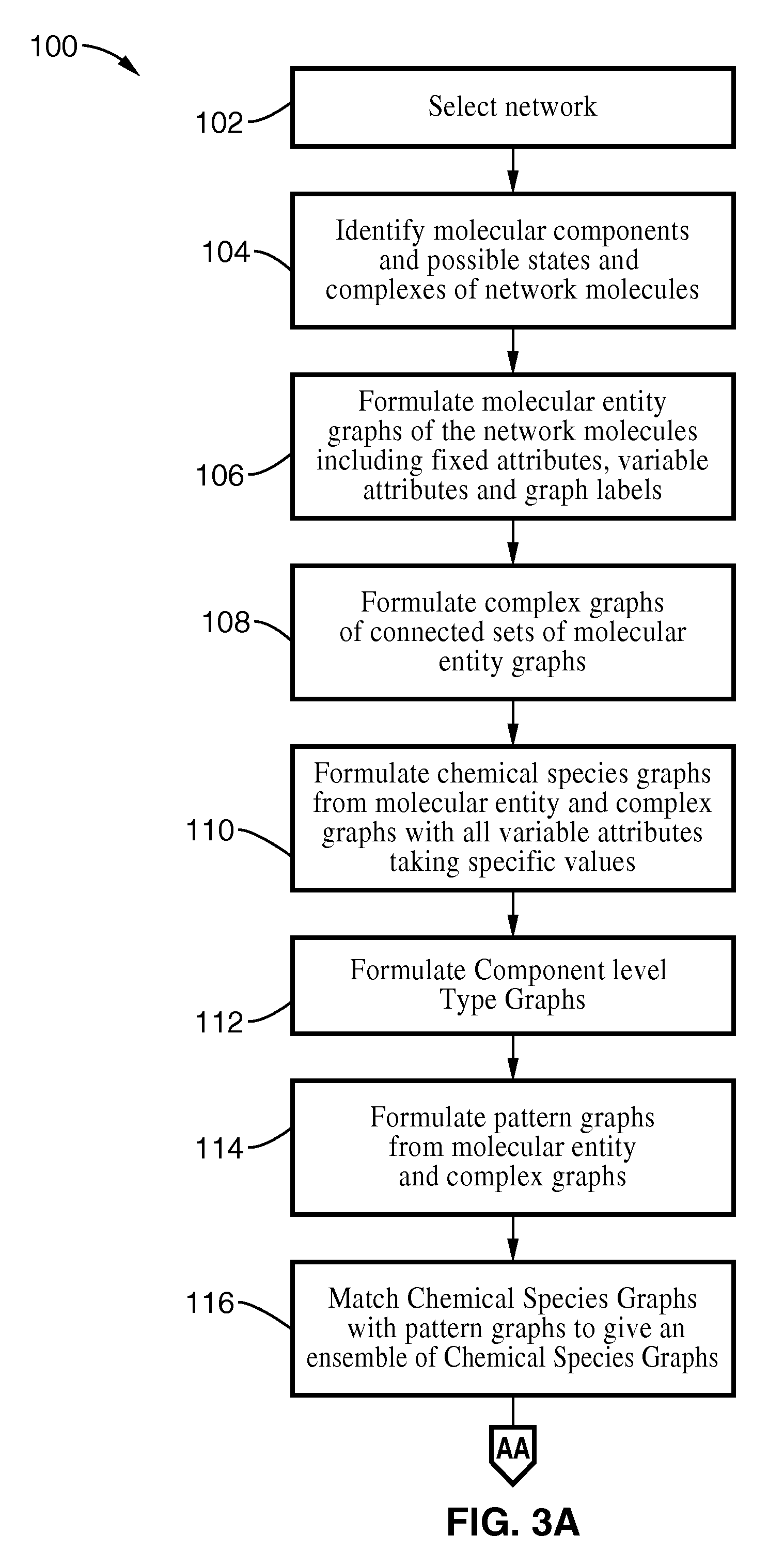Graphical rule based modeling of biochemical networks
- Summary
- Abstract
- Description
- Claims
- Application Information
AI Technical Summary
Benefits of technology
Problems solved by technology
Method used
Image
Examples
example 1
[0134] The graphical rule based modeling of a biochemical network may be illustrated by FcεRI mediated signal transduction. FcεRI is a high affinity receptor for immunioglobin E (IgE) and is the Fc receptor found on granulocytes involved in allergic reactions and defense against infections. Cross-linking of at least two IgE molecules and their Fc receptors on the surface of a granulocyte will trigger the rapid release of various molecules from its granules.
[0135] Early signaling events mediated by the immune recognition receptor FcεRI, are shown through consideration of the interactions of a ligand and three signaling proteins including two protein kinases Lyn and Syk and FcεRI. These four molecules are represented graphically in FIG. 5A. When these four molecules are subject to the ten reaction rules of FIG. 6A and FIG. 6B, the method of the invention generates 354 distinct chemical species that are connected through 3680 unidirectional reactions.
[0136] Referring to FIG. 5A, mole...
example 2
[0150] A second illustration of the use of graphical reaction rules to represent protein-protein interactions and their consequences in comparison with a conventional diagram is shown in FIG. 8 and FIG. 9. Two representations of a model for the phosphorylation of the retinoblastoma protein (Rb) by a cyclin-dependent kinase are generally shown in FIG. 8 and FIG. 9. The first representation is shown in FIG. 8 and is a diagram of molecular interactions and drawn according to the scheme proposed by Kohn, Molecular Interaction Maps As Information Organizers And Simulation Guides, Chaos 11: 84-97, (2001). One disadvantage of this diagrammatic approach is the need to represent each binary complex as a separate numbered dot since the diagram only illustrates individual species and reactions. This can become problematic when the number of reactions and complexes is large.
[0151] In contrast, in the graphical rule-based approach, interactions are specified in the form of rules and the complex...
PUM
| Property | Measurement | Unit |
|---|---|---|
| Molecular weight | aaaaa | aaaaa |
Abstract
Description
Claims
Application Information
 Login to View More
Login to View More - R&D
- Intellectual Property
- Life Sciences
- Materials
- Tech Scout
- Unparalleled Data Quality
- Higher Quality Content
- 60% Fewer Hallucinations
Browse by: Latest US Patents, China's latest patents, Technical Efficacy Thesaurus, Application Domain, Technology Topic, Popular Technical Reports.
© 2025 PatSnap. All rights reserved.Legal|Privacy policy|Modern Slavery Act Transparency Statement|Sitemap|About US| Contact US: help@patsnap.com



